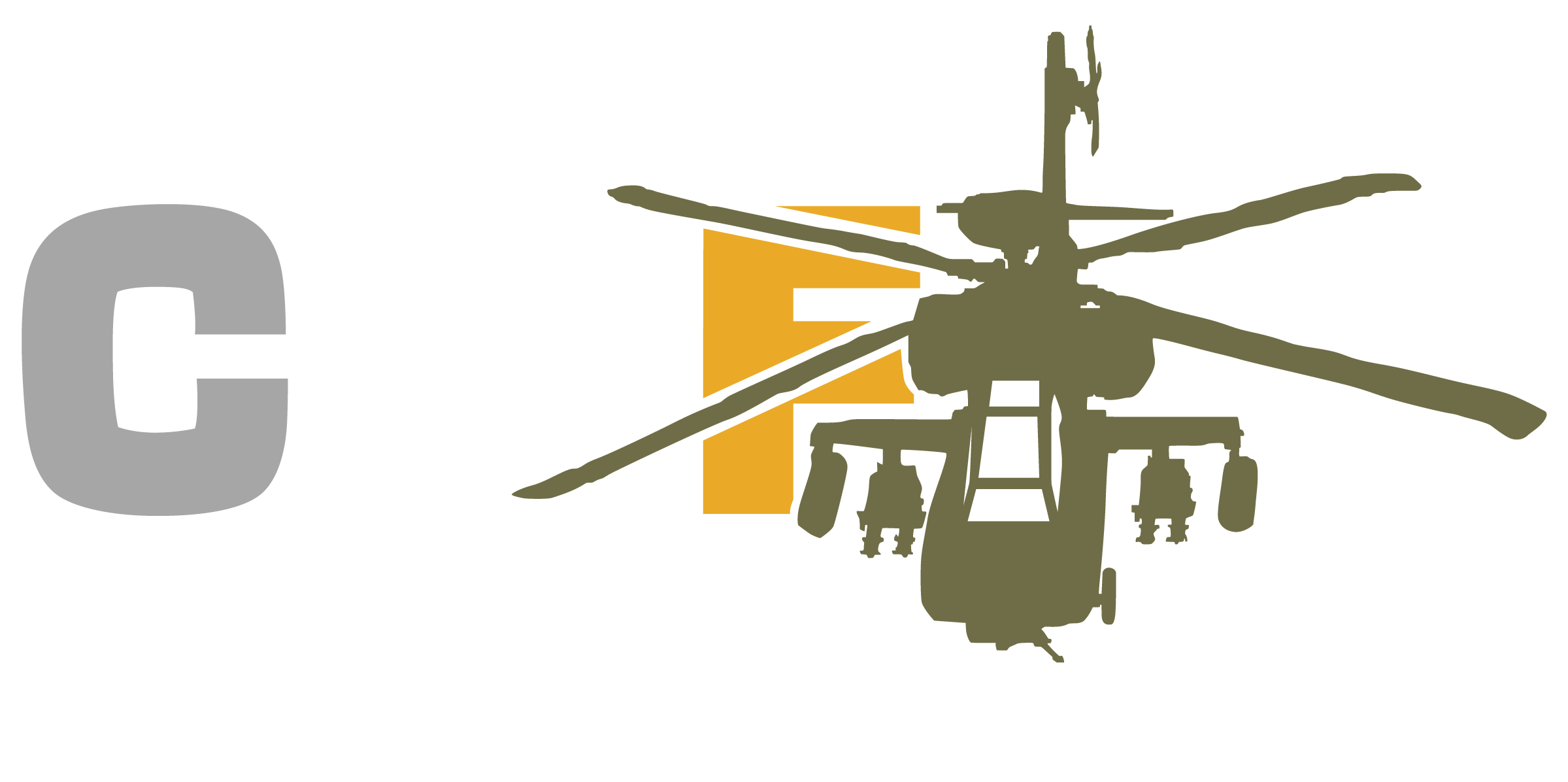Our Services
Chromic Anodize, Type I & Type IB, Cl 1 & Cl 2
Chromic Anodize, Type I & Type IB, Cl 1 & Cl 2
Chromic Anodize, Type I, also known as Type I Anodize, is an electrochemical…
Sulfuric Anodize, Type II, Cl 1 & Cl 2
Sulfuric Anodize, Type II, Cl 1 & Cl 2
Sulfuric Anodize, Type II, also known as Type II Anodize, is the most…
Hardcoat/Hard Anodize, Type III, Cl 1 & Cl 2
Hardcoat/Hard Anodize, Type III, Cl 1 & Cl 2
Hardcoat Anodize, Type III, also known as Type III Anodize or Hard Anodize,…
Chromate Conversion Coatings (Standard & ROHS Compliant), Chem Film, Alodine, Iridite
Chromate Conversion Coatings (Standard & ROHS Compliant), Chem Film, Alodine, Iridite
Chromate Conversion Coatings, also known as Chem Film, Alodine, or Iridite, provide a…
Chromate Conversion on Magnesium
Chromate Conversion on Magnesium
Chromate Conversion on Magnesium applies a protective layer to magnesium, enhancing corrosion resistance…
Passivation of Stainless Steel
Passivation of Stainless Steel
Passivation of Stainless Steel removes surface contamination, such as iron particles, to enhance…
Vacuum Impregnation
Vacuum Impregnation
Vacuum Impregnation, also known as Porosity Sealing, seals microscopic porosity in metal castings…
Advantages
- Excellent corrosion resistance, particularly against salt spray, due to chromic acid’s natural corrosion-inhibiting properties.
- Ideal for assemblies with overlapping joints, recesses, or small blind holes, as residual chromic acid does not need to be fully removed.
- Provides a strong base for paints and organic coatings, improving adhesion.
- Thinner coatings (0.00003–0.0001 inches) that meet corrosion resistance requirements without significantly affecting fatigue strength.
- Can be dyed, typically with darker colors, despite being thinner and less porous.
Limitations
- Lower abrasion resistance compared to other anodizing processes.
- Limited to alloys with less than 5% copper or 7% silicon; alloys like 7075 may develop thinner coatings and perform inconsistently in corrosion tests.
- Exhibits poorer dielectric properties, making it less suitable for applications requiring electrical insulation.
Testing
- Salt Spray (Fog) Test per ASTM B-117: Verifies corrosion resistance.
- Coating Weight Test per ASTM B 137: Ensures the oxide coating meets quality standards.
Specifications
- Common Applicable Specifications
- MIL-PRF-8625 Type I & IB Cl 1 & 2
- AMS 2470
- MIL-STD-171
- NADCAP Specifications:
- MIL-PRF-8625 Type I & IB Class 1 & 2
- MIL-A-8625 Type I Class 1 & 2
- AMS 2470
Tank Size
- 72 x 40 x 60 inches (1829 x 1016 x 1524 mm)
Advantages
- Excellent corrosion resistance for long-term durability.
- Chemically active surface that enhances adhesion for most paints.
- Improved decorative appearance, with the final finish depending on the base material and alloy condition.
- Provides electrical insulation, with resistance varying by alloy and film thickness (0.0004–0.0007 inches).
- Permits application of photographic and lithographic emulsions for mechanical holding.
- Black-dyed coatings can withstand temperatures up to 450°F.
Limitations
- Some alloys are more conducive to anodizing, affecting coating consistency.
- Accentuates surface irregularities, requiring a smooth base for optimal results.
- Rough surface finishing should be avoided for maximum corrosion resistance or uniform appearance.
- Prior welding, brazing, or soldering affects the final appearance and must be completed before anodizing.
- Reduces fatigue strength of the base material.
- Limited color options compared to painting, with color matching challenges depending on surface finish.
Testing
- Salt Spray (Fog) Test per ASTM B-117: Verifies corrosion resistance.
- Coating Weight Test per ASTM B 137: Ensures the oxide coating meets quality standards.
Specifications
- Common Applicable Specifications:
- MIL-PRF-8625 Type II Cl 1 & 2
- AMS 2471
- AMS 2472
- MIL-STD-171
- NADCAP Specifications:
- MIL-PRF-8625 Type II Class 1 & 2
- MIL-A-8625 Type II Class 1 & 2
- AMS 2471
- AMS 2472
Tank Size:
- 96 x 48 x 60 inches (2438 x 1219 x 1524 mm)
Advantages
- Superior abrasion resistance, comparable to hard chrome, ideal for high-wear applications.
- Excellent corrosion resistance with thicker coatings (0.0005–0.0024 inches).
- Higher electrical resistance for insulation purposes.
- Hardness comparable to hard chrome, enhancing durability.
- Can be lapped or honed to meet exact final dimensions.
- Teflon can be introduced to the surface for added lubricity.
Limitations
- Coatings should not be sealed unless maximum corrosion resistance is required, as sealing can reduce abrasion resistance.
- Alloy composition affects coating color and thickness, with variations across different alloys.
- High copper or silicon content (e.g., 7% to 9% combined or 5% copper alone) may result in poorer coatings.
Testing
- Abrasion Resistance Test per FED-STD-141 Method 6192.1: Verifies wear resistance.
- Coating Weight Test per ASTM B 137: Ensures the oxide coating meets quality standards.
Specifications:
- Common Applicable Specifications:
-
- MIL-PRF-8625 TYP III Cl 1 & 2
- MIL-A-8625 TYP III Cl 1 & 2
- AMS 2469
- AMS 2482
- MIL-STD-171
- NADCAP Specifications:
-
- MIL-PRF-8625 Type III Class 1 & 2
- MIL-A-8625 Type III Class 1 & 2
- AMS 2469
- AMS 2482
Tank Size:
Two tanks available:
- 96 x 32 x 38 inches (2438 x 813 x 965 mm)
- 64 x 30 x 46 inches (1626 x 762 x 1168 mm)
Advantages:
- Excellent corrosion resistance, especially under organic finishes.
- Improves adhesion for organic finishes, enhancing durability.
- Provides corrosion resistance while maintaining low electrical resistance, ideal for grounding applications.
- Suitable for spot treatment repair of damaged anodic coatings.
- Simple application via immersion, spraying, or other wetting methods.
- Cost-effective compared to anodic methods.
- Does not lower fatigue strength of the base material.
- Can be spot welded or shielded arc welded.
Limitations
- Limited electrical insulation properties.
- Clear coatings offer limited protective properties compared to darker coatings.
- Prolonged heating above 150°F reduces protective value.
- Limited coating thickness, affecting durability in harsh conditions.
- Variations in surface color (clear to light yellow or brown) depending on material and film thickness.
- Accentuates surface imperfections, requiring a smooth base for best results.
- Not resistant to scratching or harsh abrasion.
Testing
- Salt Spray (Fog) Test per ASTM B-117: Verifies corrosion resistance.
- Wet Tape Adhesion Test per FED-STD-141 Method 6301: Ensures coating adhesion.
Specifications
- Common Applicable Specifications:
- MIL-DTL-5541 TYPE I&II (All Classes)
- MIL-C-5541
- AMS 2473
- MIL-STD-171
- NADCAP Specifications:
- MIL-DTL-5541 Type I & II (All Classes)
- MIL-C-5541
- AMS 2473
Tank Size
72 x 36 x 60 inches (1829 x 914 x 1524 mm)
Advantages
- Improves corrosion resistance, protecting magnesium from environmental exposure.
- Enhances durability for lightweight components in various applications.
- Simple application process, ensuring efficient processing.
Limitations
- Limited protective properties compared to thicker coatings like anodizing.
- Not suitable for applications requiring high abrasion resistance.
- Surface appearance may vary depending on magnesium alloy composition.
Testing
- Corrosion resistance testing per ASTM B-117 or customer specifications, ensuring performance in specific environments.
Specifications
- AMS-M-3171 Type I
Advantages
- Removes surface iron particles, preventing rust and enhancing corrosion resistance.
- Reproduces the natural passive chromium oxide film under controlled conditions for uniform protection.
Limitations
- Cannot passivate carburized or nitrided stainless steel, limiting its applicability.
- Not suitable for scale removal; mechanical methods (e.g., glass bead blasting, sanding) must be used first.
- Not recommended for mixed materials, as it may affect non-stainless components.
Testing
- High Humidity Testing: Verifies corrosion resistance (varies by alloy).
- Salt Spray Test per ASTM B-117: May be specified depending on alloy and requirements.
- Copper Sulfate Test per MIL-STD-753 Method 102: Ensures effective passivation.
Specifications
- Common Applicable Specifications:
- QQ-P-35
- AMS-QQ-P-35
- FED-QQ-P-35
- AMS 2700 TY II, VI & VIII
- ASTM 967 NITRIC 1 & 2
- ASTM A380
- NADCAP Specifications:
- QQ-P-35
- AMS-QQ-P-35
- FED-QQ-P-35
- AMS 2700 TY II, VI & VIII
- ASTM 967 NITRIC 1 & 2
- ASTM A380
Tank Size:
24 x 24 x 36 inches (610 x 610 x 914 mm)
Advantages
- Seals microscopic porosity, ensuring pressure-tight components.
- Applicable to a wide variety of materials.
- Eliminates bleed-out or spotting during plating or finishing, enhancing surface quality.
- Environmentally safe, with no hazardous byproducts.
- Extends tool life during machining of powdered metal parts.
Limitations
- Not suitable for sealing large casting blowholes or obvious surface defects.
- Should be performed after all repairs and machining operations are completed to avoid reintroducing porosity.
Testing
- Zahn Cup Test: Measures solution viscosity.
- Seal Test: Conducted at 195°F for 3 to 5 minutes.
- Pressure Testing: Dependent on blueprint requirements (not performed by us).
Specifications
- MIL-STD-276 (Less pressure test)
Tank Size:
- 24Ø x 32 inches (610 mm diameter x 813 mm)
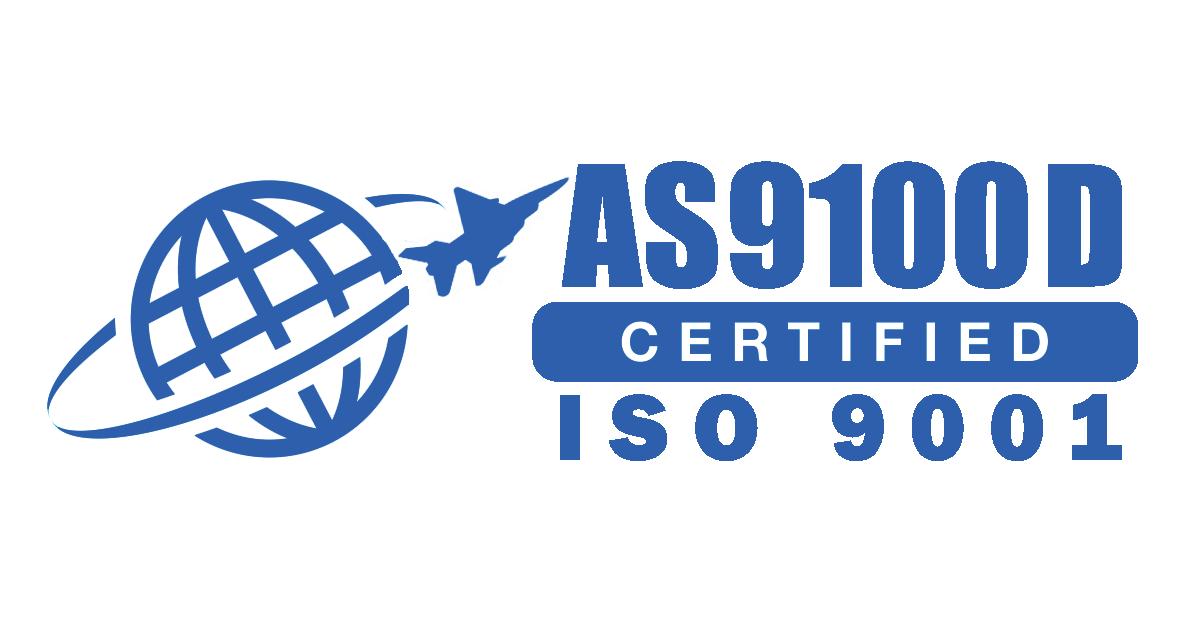
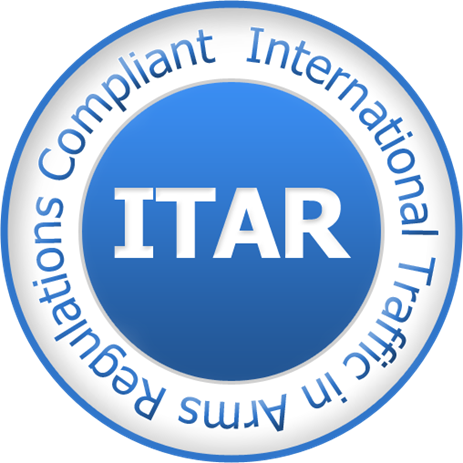
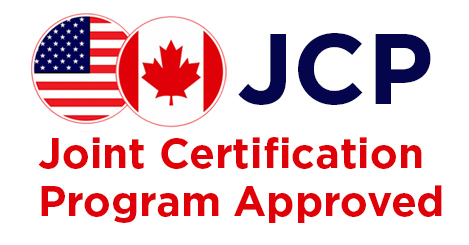
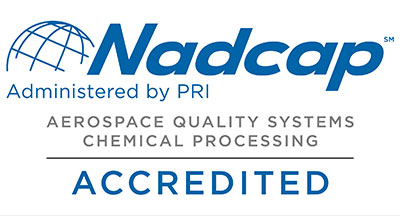
Apply Now Form
×"*" indicates required fields
